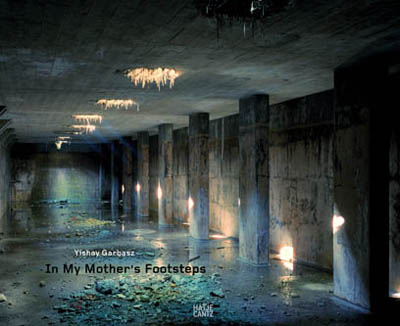Yishay GARBASZ


This post is also available in:
 French
French
British-Israeli photographer Yishay Garbasz uses a bulky large-format camera “to force herself to slow down.” Her project In My Mother’s Footsteps is an exploration of the inheritance of memory as well as a healing process. Garbasz’s mother was born in Berlin in 1929 and fled from the Nazis with her family to Holland in 1933. In 1942, at the age of fourteen, she was incarcerated and deported to Westerbork, then to Theresienstadt. Via Auschwitz-Birkenau, she arrived in Christianstadt and was sent in April 1945 on one of the infamous death marches to the Bergen-Belsen concentration camp, where she was liberated by British forces.
In the making of this project, Garbasz traced her mother’s path for a year, often on foot, over long distances. The large camera forced her to spend time at each location, letting the image come to her, opening herself and the lens to what was there, admitting her own vulnerability.
The photographer was able to present the series to her mother, who died just a short while after its completion.
Text by Jeffrey Shandler, Yishay Garbasz EN LAS HUELLAS DE MI MADRE
« Mi madre perdió parte de su alma en aquellos lugares y yo sentí la necesidad de verlos con mis propios ojos… Como soy fotógrafa, la cámara vino en mi ayuda para poder mirar. »
La fotógrafa británica-israelí Yishay Garbasz utiliza una voluminosa cámara de gran formato, para "obligarme a ir despacio", dice ella. « En las huellas de mi madre » es un trabajo de exploración de la memoria y del pasado, inscripto en un proceso de apaciguamiento. La madre de Yishay nació en Berlín en 1929 y huyó de los nazis con su familia a Holanda en 1933. En 1942, a la edad de catorce, fue detenidada y deportada a Westerbork, luego a Theresienstadt. Después de haber estado en el campo de Auschwitz-Birkenau, es trasladada a Christianstadt y luego enviada a pié, al campo de concentración de Bergen-Belsen en una de esas infames marchas de la muerte, donde fue liberada finalmente por las fuerzas británicas.
La realización de este proyecto, describe el itinerario trazado por su madre. Durante un año, a menudo a pie y a través de largas distancias. La dimensión de su cámara la obligó a detenerse en cada lugar, dejándose impregnar por las imágenes y abriéndose a ellas como la lente de su objetivo, asumiendo su propia vulnerabilidad.
Su madre pudo apreciar el trabajo terminado, poco antes de morir.
Texto de Jeffrey Shandler y Yishay Garbasz


